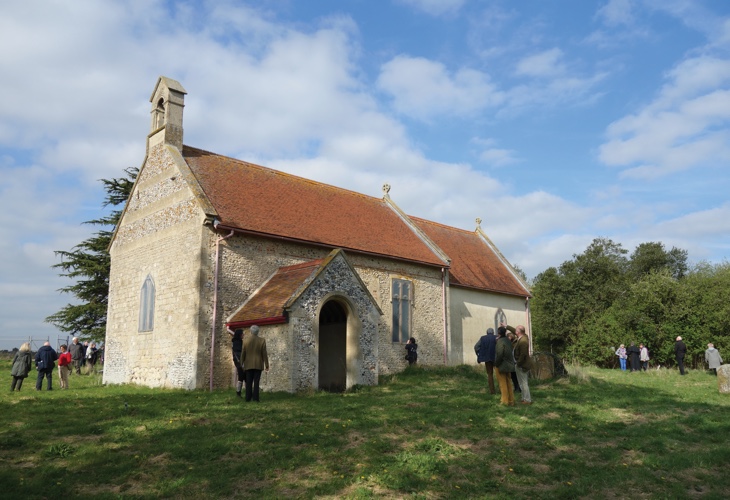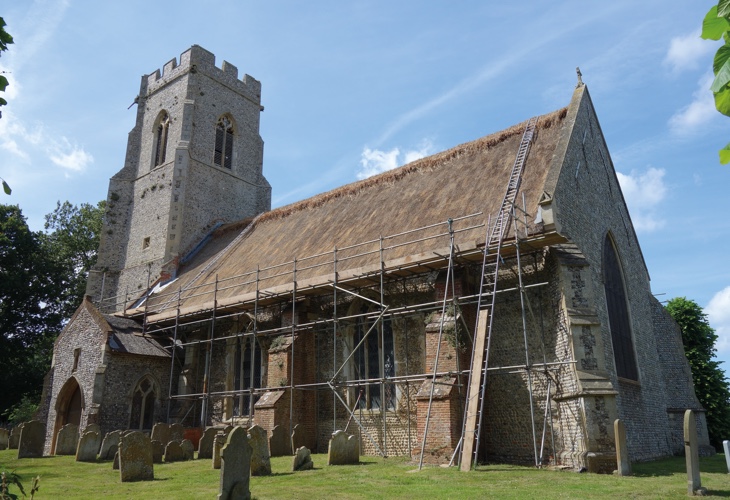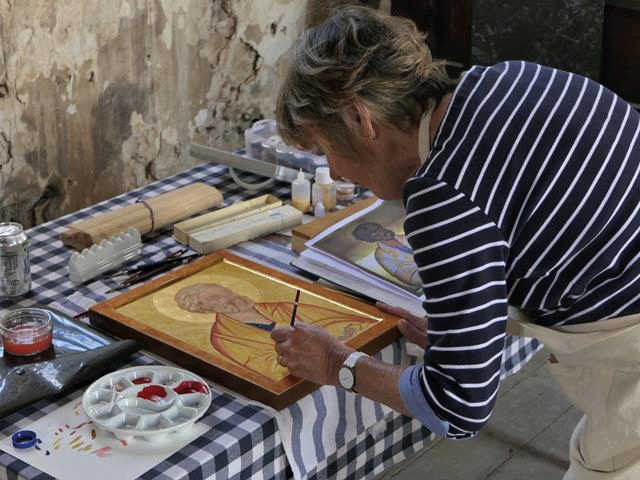142 historic sites across England including St Mary’s in Great Yarmouth and Our Lady of Consolation and St Stephen in Lynford will receive grants worth £35 million through the government’s Culture Recovery Fund
Funding will help bring heritage sites back to life by paying for vital repairs
Administered on behalf of the Department for Digital, Culture, Media and Sport (DCMS) by Historic England, 142 sites will receive support, bolstering local economies and supporting jobs across the country.
Money from the government’s £2 billion Culture Recovery Fund is intended to open up heritage and the benefits it brings to everyone, helping to level up and improve life and opportunities for people in places that need it most.
The latest £35 million funding awards builds on £52 million already allocated from the first round of the Heritage Stimulus Fund, which has supported works at 800 of the country’s treasured heritage assets. None of these historic places would have been able to carry out crucial repair work during the pandemic without this support.
Photo Credit – St Mary’s, Great Yarmouth – Simon Knott @Last_Of_England
The projects in the Catholic Diocese of East Anglia
Two Grade II* listed churches in the Diocese of East Anglia, St Marys, Great Yarmouth and Our Lady of Consolation and St Stephen in Lynford, have received nearly half a million pounds of funding for urgent repairs. These are 2 of the 17 sites funded by the Catholic Bishops’ Conference of England and Wales, which received £2.9million from Historic England for urgent repair programmes under the second round of funding via the Heritage Stimulus Fund.
St Marys – Great Yarmouth
A Safe Haven for 50 Nations – Roof renewal project at St Marys Catholic Church in Great Yarmouth receives £298,132.
After receiving funding in the first round for re-roofing the Chancel and Side Chapels St Marys was successful once again in gaining funding for the next phase of this essential project to ensure that this important historic building is watertight and preventing further deterioration of the significant internal decoration.
The works will remove the existing concrete tile roof coverings from the roofs of the Nave and side Aisles and replace with Welsh slate to match that installed on the Chancel and side Chapels under the Cultural Recovery Capital Works Fund Round 1. The Church of St Mary was built in 1848-50 by JJ Scoles and is a fine Grade II* listed building in the East Anglian style. Internally it is adorned with several outstanding schemes of decoration which unfortunately have been badly damaged due to water ingress from the leaking roofs.
Eloise Limmer Historic Churches Support Officer at the Diocese of East Anglia said:
“This grant from the Cultural Recovery fund will make a massive difference to the project at St Marys. It has been so distressing for the parish to see the damage that the leaking roofs have done to the beautiful internal decorations and they are so grateful to have been awarded this funding to undertake the next phase of the roof works following the success of the earlier work. It is uplifting to see funding supporting our important historic places of worship which have such an important role within the community.”
More about the grants awarded in the Heritage Stimulus fund here.
Our Lady of Consolation and St Stephen, Lynford
Saving a Henry Clutton masterpiece – Urgent repairs to the north stone parapet at Our Lady of Consolation and St Stephen, Lynford receives £119,956
Our Lady of Consolation and St Stephen is leased to the Norfolk Churches Trust and the application for this project was prepared by the Trust Secretary, Scilla Latham.
The Norfolk Churches Trust was founded in 1976 to provide support to churches of all denominations in the county through grant aid and advice. The Trust cares for thirteen redundant churches leased from the Diocese of Norwich and the Catholic Diocese of East Anglia. The Trust is responsible for their routine maintenance, repairs and insurance. Wherever possible the churches are open to visitors throughout the year. Comments left in the Visitors Books clearly demonstrate that whilst these churches may not be regularly used for worship, they are cherished by a wider congregation spread across the globe: many of whom are in search of ancestral links with the parish. By arrangement with local clergy occasional services are held to which everyone is welcome.
The work proposed work at Lynford church focuses on repairing and conserving the deteriorating north parapet and carrying out conservation work to the stone bellcote. The current condition of the stonework has meant that the church has been closed to the public for more than a year due to safety concerns. Once the repairs are completed, the scaffolding which has been supporting the north parapet since June 2018 can be removed and the church open for worship and visitors again
The Church of Our Lady of Consolation and St Stephen at Lynford is one of the most important small Roman Catholic Churches in East Anglia. It is believed to be the only church in England dedicated both to St Stephen and to Our Lady of Consolation. It was commissioned from the architect Henry Clutton (1819-93) and built in the grounds of Lynford Hall by Yolande Lyne-Stephens, the rich widow of the MP, Stephens Lyne-Stephens.

Scilla Latham from the Norfolk Churches Trust said:
“The Norfolk Churches Trust is immensely grateful to receive this generous grant from the Cultural Recovery fund. It will enable the Trust to carry out long overdue urgent repairs on this little-known jewel of a church which the Trust leases from the Catholic Diocese of East Anglia. Although not open for regular worship it is often used for weddings as well as festival churches, as visitors are welcome throughout the year. The conservation work which is expected to take five months will be carried out by Skillingtons who are specialists in complex stonework repairs.”
Culture Secretary Nadine Dorries said:
“From local churches to ancient buildings and landscapes, the UK’s unique heritage makes our towns, cities and villages stronger, more vibrant and helps bring communities together.”
“This latest funding – £35 million from our unprecedented Culture Recovery Fund – will help protect sites including Jane Austen’s House and Hampton Court Palace for future generations and help them build back better from the pandemic.”
Duncan Wilson, Historic England’s Chief Executive, said:
“Funding from the government’s Culture Recovery Fund is hugely welcome at a time when the people and organisations who look after our vast and varied array of heritage urgently need support to carry out essential repairs. Heritage is a fragile eco-system, with an amazing cast of characters who keep our historic places alive, with specialist skills that take time to learn and experience to perfect. These grants will protect their livelihoods, as they use their expertise to help our heritage survive.”







